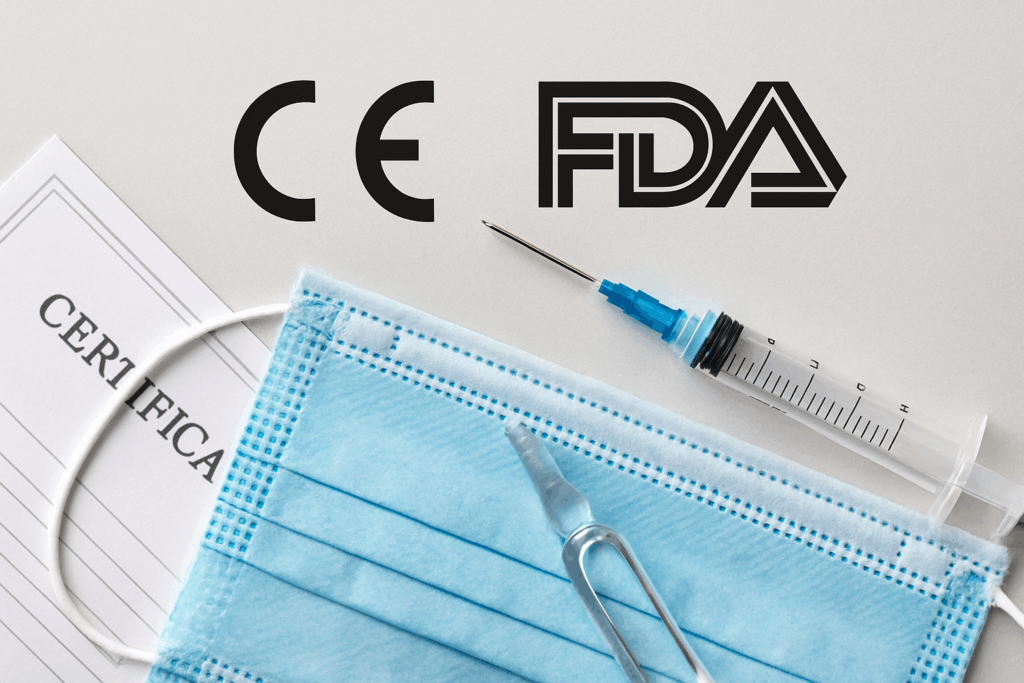In the world of healthcare—and especially dentistry—quality, safety, and compliance aren’t optional; they’re essential. Whether you’re sourcing dental implants, bone grafts, or PPE, you’ve likely come across terms like CE marked or FDA approved. But what do these certifications actually mean? And how do they affect your practice and patient safety?
Let’s break down CE and FDA certifications, why they matter, how they differ, and what dental professionals should know when choosing medical supplies.
What is CE Certification? (European Conformity)
CE stands for Conformité Européenne, which means “European Conformity”. A CE mark indicates that a medical product complies with EU health, safety, and environmental protection standards.
✅ Key Points:
– Required for medical devices sold within the European Economic Area (EEA).
– Applies to a wide range of products including dental equipment, surgical tools, and PPE.
– Manufacturers must demonstrate compliance with the Medical Device Regulation (MDR) in Europe.
🔍 For Dental Products:
CE-certified dental tools, implants, and devices are considered safe for clinical use in Europe. Products must undergo risk analysis, technical documentation, and performance testing.
What is FDA Certification? (United States Food and Drug Administration)
The FDA is a U.S. regulatory agency that ensures the safety and effectiveness of medical products for American markets. FDA “approval” or “clearance” means a product meets strict criteria, efficacy, and manufacturing standards.
✅ Key Points:
– Required for medical devices sold in the United States.
– Devices are classified into three risk-based classes:
- Class I (low risk): e.g. dental mirrors, gloves
- Class II (moderate risk): e.g. dental handpieces, X-ray equipment
- Class III (high risk): e.g. dental implants bone graft materials
– Class II and III devices often require 510(k) clearance or Premarket Approval (PMA).
🔍 For Dental Products:
FDA clearance gives assurance that a product is proven safe and effective for its intended use, often based on clinical data and prior comparable devices.
CE vs. FDA: What’s the Difference?
Both CE and FDA certifications mean that a medical product is considered safe—but they come from different parts of the world and follow different rules.
– CE certification is used in Europe. It shows the product meets European standards for health, safety, and environmental protection. The process is often faster and focuses on technical documentation and performance.
– FDA certification is required in the United States. It’s more detailed in data-driven with a strong focus on providing a product’s safety and effectiveness through scientific and clinical evidence.
The main difference are in how strict the process is, what type of data is needed, and where the product can be legally sold. Some products may have both CE and FDA approvals if they’re sold in both regions.
In short:
– CE=Europe-focused, faster approval
– FDA = U.S. – focused, more rigorous testing
Both are trustworthy—just developed for different markets.

